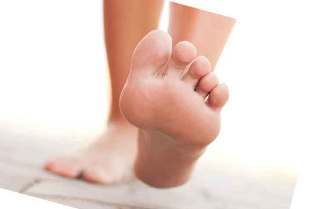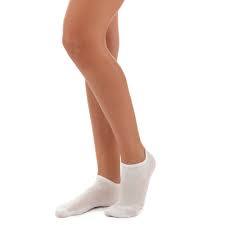Palmar-plantar psoriasis affects the palms of the hands and soles of the feet and the disease is of a pathological autoimmune diseases.

Psoriasis on the palms of the hands and soles of the feet, together with the localization process on the scalp is one of the most common forms of the disease. This represents about 14% of the cases a pathological condition of the skin.
The reasons for the development of the disease
Although Palmar-plantar psoriasis is not strange, that is a reference to the age, in the period of 15-35 years was the highest frequency for the development of the disease. There is a link with ethnicity. It is reported that in individuals of Caucasian nationality, older than 50 years, which significantly increases the risk of developing this disease.
The exact cause of the pathological conditions is not fully understood and is still considered the disease to be an autoimmune process. In normal operation, the immunity of the person receives protection against a variety of foreign agents, viruses, allergens, protozoa and other micro-organisms.
When psoriasis occurs a malfunction in the body, then the immune system begins with the production of aggressive substances against its own cells and tissues. The excessive number of T-lymphocytes (key cells of the immune system) and macrophages leads to the development of the inflammatory response and excessive proliferation of skin cells, causing the observed typical symptoms and the occurrence of hyperkeratosis.
Note! Hyperkeratosis is an excessive thickening of the epidermis — the outer layer of skin.
Some studies suggest a lesser role for the factor of heredity. For example, about 10% of the population inherit the genes associated with psoriasis and only 3% of them develop the disease. Such statistics suggest the presence of other, more fundamental causes of illness.
Additional risk factors are:
- Stress and emotional lability (sensitivity).
- Smoking and taking medication.
- In the background diseases that affect the immune system.
- Infections, frequent injuries and cuts on the palms of the hands and soles of the feet.
In the 2006 study, it was stated, on the relationship of dermatological diseases, cardiovascular diseases and other conditions: hypertension, diabetes and hyperlipidemia.
The results of the experiments to the end were not clear. For a complete understanding of all the processes of the study, the topic continues and more research is needed.
Triggers the disease (factors that influence pathology, but does not cause directly) can be the following:
- Sunburn;
- Insect bites;
- The impact of allergens.
- Common bacterial infections such as pneumonia or inflammation of the throat;
- Viral diseases, including HIV;
- An inflammatory condition of different difficulty: bronchitis, nasopharyngitis;
- Severe alcohol intoxication;
- Obesity.
The diagnosis of Palmar-plantar psoriasis

Despite the rapid development of modern medicine, is still the creation of psoriasis on the palm of the hand, it is possible by visual inspection of the skin by a physician without special equipment. A physical examination is based on "psoriatic triad", whose manifestations were observed with a light scraping of the scales from the affected parts of the body.
The doctor pays attention to the history of the disease, as some constantly take medications can trigger the condition:
- Indomethacin and other nonsteroidal anti-inflammatory drugs (nsaids);
- Lithium and antimalarial drugs;
- Sudden withdrawal of corticosteroids;
- Taking penicillin, hydroxychloroquine.
In difficult cases, a comprehensive examination, which includes laboratory blood tests and ultrasound scanning, as well as the exclusion of a fungal infection with a mycological diagnosis. If the witness may be questionable biopsy of lesions of the skin.
Symptoms and first signs of Palmar-plantar psoriasis
Among the main types of diseases there are five versions. So in 90% of cases, the observed visible characteristic clinical picture.
It looks like Palmar-plantar psoriasis? The patient the palms of the hands and soles of the feet, defined psoriatic plates, red, scaly patches on thickened skin, prone to peeling. In centers the person feels itching, fever, and pain in varying degrees of intensity; in some cases the skin is cracked and bleed.
That will impact on the design of the nail:
- In the nail plates may be errors, holes;
- The nail is thickened and discolored;
- Changing its shape.
Palmar-plantar disease occurs as part of the overall process, however, is limited by the skin on the palms of the hands and feet. Psoriasis on the soles of the feet making it difficult to walk and wearing shoes. Hand injury can not only prevent the execution of any part of, but also impose a negative impact on the relations with people. Normal position, as the welcome page, can be awkward, leading to embarrassment and social anxiety, on the man, until the development of social phobia.
A distinctive feature of this form of the disease is the presence of varieties of process which can be called with the following conditions:
- Palmar-plantar pustular psoriasis Barber;
- Purulent psoriasis;
- Pustular dermatitis.
Referred to disorder of the skin causes the formation of clusters (of clusters) of various pustules in the region of the board. In general, as the rashes are very similar to normal pimples. It should be noted that such type of the disease, which is transmitted easy methods to treat and often requires an integrated and holistic approach to therapy.
Please, note! Pustular psoriasis in the palms and soles may require treatment with antibacterial drugs, when joining a bacterial infection.
Phase Palmar-plantar psoriasis

As with all forms of pathological process, Palmar-plantar localization is characterized by three clinical stages:
- In the initial phase. The occurrence of injury to the hands and feet. The panels are characterized by red, may be purulent whitish inclusions; the patient worries intense itching. Lesions coalesce into large pockets. Their number depends on the individual characteristics of the disease.
- In the stage of stabilization. This condition does not progress, the new pathological elements are not formed, but the old is still intact. The itching gradually subsides, and the color of the lining it becomes less bright.
- The back of the stage. Together with the regression of the elements, pruritus is absent. Treatment is supportive, either excluded altogether; offer recommendations for maintenance of remission and prevention of relapses.
In some cases, the disease is classified according to the elements of the rash:
- Normal form — a typical manifestation of the skin;
- Horny form is accompanied by hyperkeratosis and the typical red spots a little, or does not exist;
- Form Of Barbera.
Treatment
Palmar — plantar psoriasis is a chronic disease, which may appear repeatedly, regardless of the treatment. However, there are therapies to achieve reduction compared to the acute and extend the period of remission.
The main treatment is an attempt to prevent the rapid growth of the cellular elements, leading to the development of plates is carried out anti-inflammatory therapy. The alternative technique ensures the immediate removal of the scales.
Because the skin on the palms of the hands and soles of the feet are thickened, even in healthy people, treatment of this data often involves a combination of techniques and a more aggressive effect on the injury.
The first psoriasis on the palms of the hands and soles of the feet is intended for local treatment in the form of gels, ointments and creams:
- Vitamin D analogues;
- Ointments based on corticosteroids;
- Retinoids;
- Anthralin;
- Special resin;
- Salicylic acid;
- Moisturizer to reduce swelling and relieve inflammation.
Common side effects are irritation, drying and defatting of the skin. Accessories can phototherapy:
- Natural ultraviolet radiation from the sun;
- Artificial ultraviolet radiation with the aid of a special device;
- The Excimer laser;
- Photochemotherapy.
It is important that you know!Very important for a smooth transition to a natural phototherapy. It is recommended to start with 5-10 minutes of direct sunlight per day. Later you can gradually increase the exposure time to 30 seconds per day.
Medicines for the treatment of Palmar-plantar psoriasis
Palmar-plantar psoriasis includes treatment with oral medications in more severe form of the disease:
- Methotrexate;
- Retinoids;
- Cyclosporine;
- The biological drugs that reduce the activity of the immune system;
- Thioguanine;
- Hydroxyurea.
The most common side effect of named medications are problems with the gastrointestinal tract.
Disease and the prevention of
Severe course of the disease to a certain extent, can affect the development of serious conditions, which threaten the health and lives of patients: 58% increased risk for myocardial infarction and 43% a stroke. The main immediate complications of psoriasis on the palms and soles psoriatic arthritis and nail dystrophy.
National medical research center has identified a number of diseases, which may depend on diseases of the skin:
- Associated autoimmune conditions: crohn's disease, celiac disease, sarcoidosis, and others;
- Eye disease: cataract and glaucoma, and infectious processes;
- High blood pressure;
- Parkinson's Disease;
- Diabetes;
- Diseases of the liver and kidneys;
- Osteoporosis;
- Depression.
Note.With timely treatment and adherence to necessary guidelines and possible recurrence of psoriasis can be reduced, and skin manifestations, that is reduced.
Recommended preventive measures:

- Every day a bath with natural oils, salts and mild soap that does not contain artificial flavorings and colorings;
- Use a moisturizer for the skin (in severe cases — twice a day), especially after receiving the water treatment. Not allowed to use hard towels. Simply apply on the skin a soft, dry cloth, then use the cream;
- Get enough sunlight. Check with your doctor to choose the "Golden mean". Too weak insolation will not bring noticeable effect, and too intense will increase the risk of skin cancer;
- Avoid triggers such as Smoking, alcohol consumption, stress and infection;
- The use of aloe juice. You must fill the lotion on the damaged skin several times a day. There are official studies that prove the effectiveness of this plant in the fight against inflammation of the skin;
- Get at least three grams of omega-3 fatty acids per day. In the diet include fish, walnuts, flaxseed, oil or taking capsules of fish oil. Fatty acids help to reduce inflammation in the body;
- Help make some special allowances on the basis of the barberry, tea tree oil or Dead sea salt.























